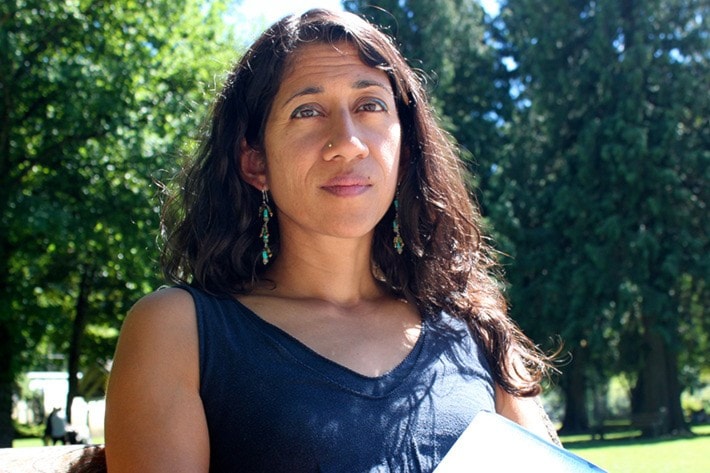For internationally acclaimed author Padma Viswanathan, Nelson has always held a strange allure.
“My first memories are of Nelson, and then we left, and so it has really remained for me a place of romance in my imagination,” the author told the Star during an afternoon chat in Lakeside Park.
“I had this romance with Nelson, as though it contained a parallel existence I never got to have,” she said.
That fascination compelled Viswanathan to immortalize Nelson, albeit under a different name, in her most recent novel The Ever After of Ashwin Rao.
The novel takes place partially in a Kootenay town called Lohikarma, complete with local landmarks such as the man-sized gargoyle on Front Street and the big orange bridge.
Viswanathan’s novel follows Ashwin Rao, an Indian psychologist trained in Canada, as he attempts to complete a study of comparative grief by interviewing people who lost a loved one to the Air India terrorist attacks of 1985.
“I didn’t set out to write a book about the Air India bombings,” said Viswanathan.
Originally she was writing about a man who loses faith in his guru, and she wanted to explore the strange ways grief manifests itself.
But while she was writing, the Air India trial was in the news and she found herself getting sucked into the courtroom intrigue. Rao became her fictional counterpart in the discovery process.
“He comes to Canada in 2003 for the beginning of the trial. His sister and her two children were on the plane,” she said. “He realizes at some point, sitting in the courtroom, that he couldn’t care less what the outcome of the trial is. What he wants to know is how people have fared since then, what has happened in the lives of people like him.”
Rao decides to travel across Canada interviewing dozens of people who lost family and friends in the terrorist attack, and he starts chronicling what has happened in the twenty years since.
Viswanathan was living in the United States when the Air India trial was on TV, but she said updates were sparse.
“Maybe someone much more media-savvy than I was at 16 might have been able to follow it, but even my father, who’s pretty much a newshound, said he didn’t hear much.”
There were numerous breaks in the proceedings, and then famously no convictions, but what ultimately interested Viswanathan was the inquiry into the multi-faceted, twenty-year affair.
“The Canadian government finally did a complete inquiry into the bungling (of the Air India case)…the failure to prevent it, the failure to investigate it, the failure to bring anybody to trial and the failure to convict. It was a whole cascade of mistakes,” she said.
But when asked to summarize what exactly went wrong, she deferred to the experts.
“I don’t think there’s a capsule answer for that, that hasn’t already been given. The inquiry takes 8,000 pages or something to describe it. I would be incredibly hubristic to attempt to give you something in sound byte form,” she said. “It was a very complex matrix of historical and personal factors that led to this failure at any number of levels.”
Viswanathan started studying the political and social antecedents to the attack, and found some surprising and little-known historical facts.
“The bombing that happened in June 1985, most people thought it was a reprisal for the Amritsar massacre, the storming of the Golden Temple about a year earlier,” she said. “In between these two incidents on Halloween of 1984 Indira Gandhi was assassinated. She was assassinated by her Sikh bodyguard, presumably for her ordering the storming.”
For three days after the assassination, New Delhi saw mob violence and looting.
“There were really targeted assaults on Sikhs, and Sikh-owned businesses and homes in New Delhi. Hoodlums, really. There was violence in other cities but it was shut down by local governments. But then, in Delhi, nobody went out and stopped it.”
She said this could’ve possibly be a partial impetus to the tragedy.
“Many people could see it as a reprisal for that rather than the much earlier storming of the Golden Temple.”
“I’m trying to represent in fiction these cycles of violence. Once I got to one point, I had to look at the point before. And then the point before that. I ended up scrolling back in Canadian history, and then British colonial history and basically back into the ether,” she said.
“There’s no point at which you can say this conflict began.”
For more information visit Padma Viswanathan’s website at padmaviswanathan.com.
